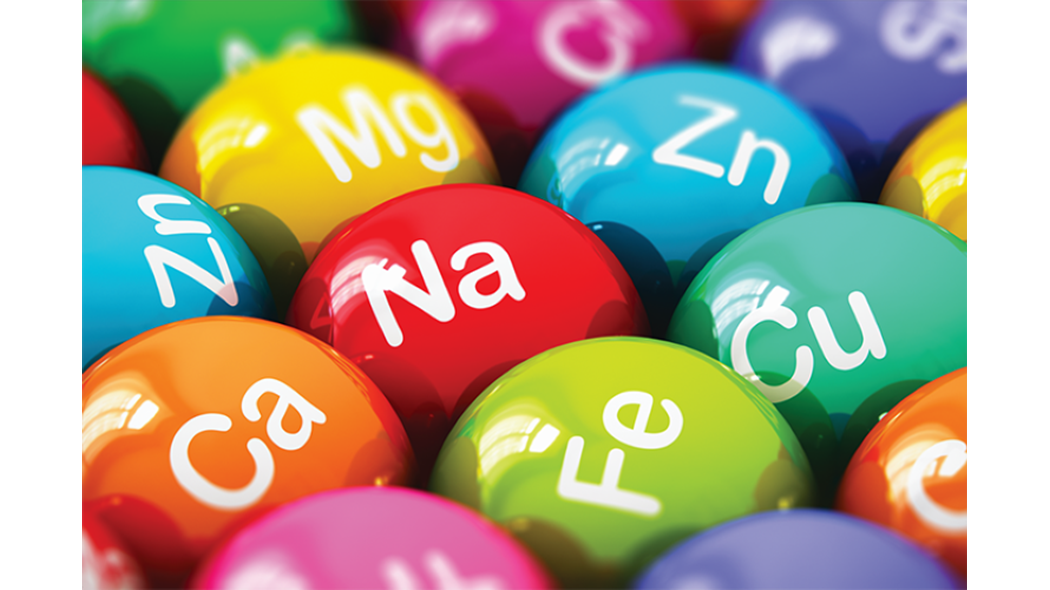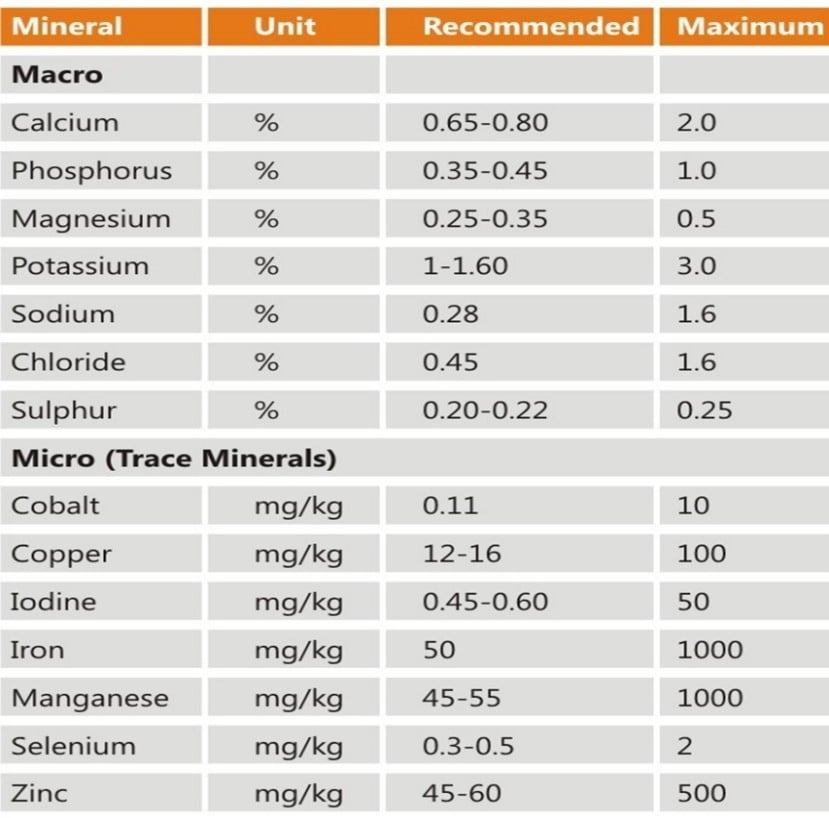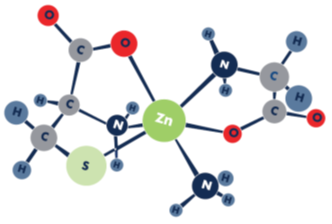Importance of Optimum Mineral Nutrition
Inclusion of minerals in feed is essential for the health, growth, production and reproduction in dairy cattle. Minerals prevent the incidence of diseases and reproductive disorders. Mineral deficiency leads to lower milk production in lactating cattle and decreased growth rate in heifers. Trace mineral deficiencies can affect a cows’ immune function and their natural ability to fight infections, such as mastitis and other diseases. Supplementation of minerals should be done as per the nutritional requirement of animals according to the stage of life. Supplementation of minerals can be done through a variety of forms, like inorganic sulphates and oxides, chelated minerals, and hydroxy minerals. Practicing precision trace mineral nutrition is essential for optimizing the production cost, decreasing the environmental pollution, and improving the animal productivity and well-being.
- By Dr. Mahesh G R and Dr. Mithilesh Chaurasia, Trouw Nutrition India

Importance of minerals:
Minerals are the inorganic matter which are not synthesized in the body on its own, so they need to be supplemented externally. Minerals are classified into macro and micro minerals based on the concentration of animal requirement (Fig-1). Lactation increases the mineral requirements of dairy cows which predisposes cows to mineral deficiency. High yielding dairy cows’ fertility is of major economic importance because reproductive efficiency affects the amount of milk produced in its lifetime (Ansari, 2002). Deficiency of certain trace minerals like selenium leads to retention of placenta (NRC, 2001).
Supplementation of copper, iron, zinc, and manganese improves the condition of uterus and conception rates (Nandi et al, 1999). Deficiency of Ca and P causes various abnormalities ranging from skeletal disorders (lameness, enlarged joints, deformation, and fractures) to reproductive disorders like delayed involution, ROP, and dystocia. Magnesium plays a crucial role in absorption of Ca and P and its deficiency can cause hypo magnesium tetany in grazing cows. Copper plays a crucial role in reproduction, bone, connective tissue development, and skin pigmentation. Zinc is an essential component of various enzymes like carbonic anhydrase, carboxy peptidase, alcohol dehydrogenase, glutamic dehydrogenase, lactic dehydrogenase, and alkaline phosphatase, plays a crucial role in reproductive functions in both males and females. Piper and Spears, 1982 reported that heifers supplemented with Zn have higher calving rates (93%) than control groups. Selenium being an integral part of glutathione peroxidase along with Vitamin E plays a key role in preventing cell damage by scavenging free radicals (Sharma et al, 2005). Iron being a component of Haemoglobin helps in transport of oxygen and deficiency leads to anaemia. Cobalt is an integral part of Vitamin B12 and deficiency of cobalt causes anaemia, rough hair coat, low appetite and low conception rates.

Fig-1: Requirement of minerals in Dairy on DMB (NRC, 2001)
Sources of Minerals and Need for optimal Mineral Nutrition:
Generally, minerals are supplied in the form of inorganic sources. These inorganic sources are in the form of sulphates, phosphates, chlorides, carbonates, or oxide forms of the trace mineral. There could be huge variability with respect to bioavailability of minerals, when they are supplemented in inorganic forms (Table-1).
Table 1: Relative bioavailability of some Trace mineral sources
|
Trace mineral |
Source Compound |
Element % |
Bioavailability |
|
Cobalt |
Cobalt carbonate Cobalt sulphate Cobalt chloride |
46.0-55.0 21.0 24.7 |
NA |
|
Copper |
Copper sulphate Copper carbonate Copper chloride Copper oxide |
25.0 53.0 37.2 80.0 |
High Intermediate Intermediate Very low |
|
Iodine |
Calcium iodate Ethylenediamine dihydro iodide (EDDI) Potassium Iodine |
63.5 80.0
69.0 |
High High High |
|
Iron |
Iron oxide Ferrous carbonate Ferrous sulphate |
46.0-60.0 36.0-42.0 20.0-30.0 |
Unavailable Low High |
|
Manganese |
Manganous sulphate Manganous oxide |
27.0 52.0-62.0 |
High Intermediate |
|
Selenium |
Sodium selenate Sodium selenite |
40.0 45.6 |
High High |
|
Zinc |
Zinc carbonate Zinc chloride Zinc sulphate Zinc oxide |
52.0 48.0 22.0-36.0 46.0-73.0 |
High Intermediate High Intermediate |
(Adopted from Hemkem 1994, KY Ruminant Nutrition Workshop Proceedings)
Stressors associated with intensive animal production force the animal producers to include high levels of trace minerals in the diets, irrespective of the forms/sources of supply. However, these high levels, only enhances the antagonistic interactions amongst the trace minerals as well as with other anti-nutritional factors, making them less available to the animals, along with excess leaching of minerals into environment. Inorganic mineral sources interactions occur in rumen, as they compete between themselves (Fig-2). For example, higher levels of iron can antagonize the absorption of copper and Manganese. Therefore, a supplementation strategy should be in place to reduce these interactions and increase the efficiency in absorption of trace minerals. So, this necessitates the need for better forms of trace minerals that are bioavailable, stable as well as least reactive. This has led to the evolution of trace mineral forms like chelates and hydroxy, with latter been an innovation in the field of trace minerals. These mineral forms can have a positive impact on achieving an optimized level of productivity and health while minimizing any negative impact on the environment.
Chelated Forms:
Minerals are classified as chelates when they are bound to an organic ligand chemically. Optimal chelation provides highest stability to the chelate with the right amount of trace mineral been made available at the point of absorption, enhancing the bioavailability of trace minerals fed. However, given the varied production processes, the variability in ligand selection and lower mineral concentration, there is lot of concerns around the selection of right chelated forms (Fig-3). Generally, organic minerals are added to supply 25-50% of the amount needed of a given trace mineral.

Fig.2: Chelated Trace Mineral structure Optimin Zn:
Conclusion:
Optimal mineral nutrition involves the supplementation of minerals as per the requirement of animal, with no or minimal loss of nutrients in the environment. The higher bioavailability of minerals resulting from feeding the hydroxy/organic forms of minerals has a positive effect on the immune system and gut wall tissue integrity. This improves gut barrier function, reduces the risk of “leaky gut” and systemic inflammation in dairy cows, which in turn promotes health and productivity of dairy animal. Thus, an optimal mineral nutrition programme should encompass selection of an optimal level of the most bioavailable sources of trace minerals. This will ensure that the dairy cattle are receiving a consistent level of essential trace minerals that are needed to support optimized well-being and productivity.
For further information, kindly write to us at customercareindia@trouwnutrition.com